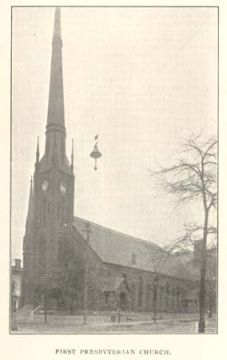
Argyll Colony was the first colony of Highland Scots to settle in the Upper Cape Fear. Settled in 1739, the colony was named for the shire in western Scotland from which its members came. They were the vanguard of what began as a trickle and grew into a flood of Highland immigrants to Bladen County (later divided into Cumberland, Moore, Robeson, Harnett, and Hoke Counties). By the 1770s Highland Scots comprised one-third of the population of that region, earning for it the sobriquet "Valley of the Scots."
The Argyll Colony sailed from Scotland in June 1739, arriving in North Carolina during September. They probably spent most of their first winter in or near Newton (soon to be renamed Wilmington) because they had not yet decided on a specific location for settlement. On 10 Nov. 1739 James Murray, a local merchant, wrote Henry McCulloh that four of the party had traveled upriver to inspect vacant land near his (McCulloh's) land, presumably a 100,000-acre tract in present-day Guilford and Alamance Counties. The Murray letter also implies that the Argyll colonists had previously negotiated with McCulloh, a London merchant and large-scale land speculator in North Carolina, about purchasing some of his land.
By February 1740 the colony's five leaders-Duncan Campbell, Daniel McNeill, Dugald McNeill, Neill McNeill, and Coll McAlister-had petitioned the colonial Assembly for an exemption from all taxes for ten years and a grant of £1,000 to be distributed among them. This indicates that by that date they probably had decided on which land to settle and had made entries for the property that was granted them the following June. In return for the favors requested, they had pledged to encourage their friends and neighbors to immigrate to the province. Exemption from taxes was granted but the award of £1,000 was not.
There is a persistent tradition that Governor Gabriel Johnston, himself a Lowland Scot, played a leading role in bringing the Argyll Colony to Cape Fear, but there is no evidence of this. Another popularly held but untenable tradition claims that other Highland Scots had preceded the Argyll Colony and that the colony on its arrival was greeted by kinsmen and former neighbors. Without doubt, the first Argyll colonists could not have envisioned the number of Scots who would follow them, although they certainly encouraged their peers to emigrate. The place they chose to settle became a Mecca for succeeding generations of Scottish immigrants; indeed, the Valley of the Scots became home to the largest aggregation of that nationality in the continental United States.